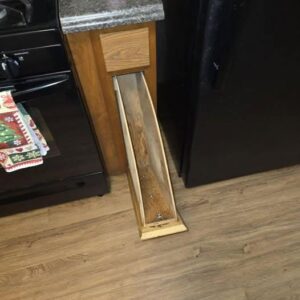These small moth larvae don’t bite or spread disease, but they feed on fabrics, hair,
and dust—leaving damage and unsightly cases on walls and ceilings.
Why They Appear Indoors:
Humidity & Moisture – Bathrooms, basements, and kitchens attract them.
Dust & Hair – They thrive on lint, pet hair, and dead skin.
Fabrics – Wool, silk, and stored clothing are easy targets.
Clutter – Piles of paper or boxes create hiding spots.
Pets – Extra hair and dander provide food.
Prevention Tips:
Reduce humidity with fans or dehumidifiers.
Vacuum weekly, including corners and vents.
Store natural fabrics in airtight bins.
Declutter and rotate stored items.
Inspect ceilings, closets, and rugs for early signs.
Bottom line: Kamitetep infestations build slowly but thrive in warm, cluttered, and damp spaces.
With regular cleaning and proper storage, you can keep them under control and protect your home.





